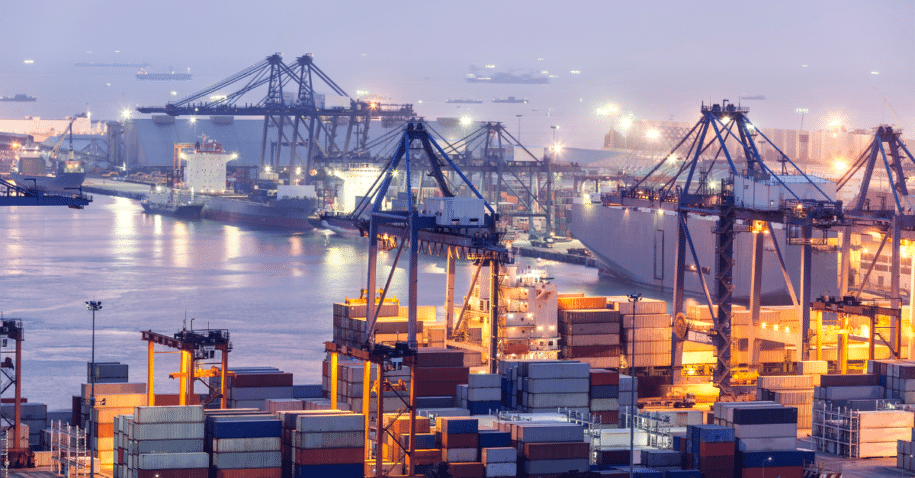Risky business: Trade needs technology for better risk management
Across global trade, risks can be difficult to assess, quantify and, therefore, reduce. Technology, such as artificial intelligence and big data, is well matched to bolster risk management in the sector and beyond owing to immense learning capabilities, writes the TradeSun team.
The trade and wider financial sector are experiencing turbulence.
Earlier this year, a large commodity trader said it had been the victim of a half-a-billion-dollar “systematic fraud” centering on fake nickel trades and document falsification. Meanwhile a troubled Silicon Valley Bank was snapped up by a US lender, and the assets of a Credit Suisse in crisis were acquired by UBS in March.
The current economic climate is, as the Wall Street Journal puts it, the “most perilous” industry conditions since the 2007-08 Global Financial Crisis.
These unconnected events boil down to one crucial element: inadequate risk management that has left some firms, in their respective areas, fragile.
Now, there are many, many different types of risk that financial institutions and businesses face, but understanding those risks and their potential impact is crucial to business continuity, resilience and growth.
An evolving landscape
Following the financial crisis 15 years ago, a host of legislative, regulatory, enforcement, litigation, and political responses were announced to prevent such a crisis ever happening again.
“Market participants and other companies across the globe [now] operate in a significantly altered landscape marked by … increasingly active regulatory and criminal enforcement worldwide,” reads a report published on Harvard Law School, titled The Financial Crisis 10 Years Later: Lessons Learned.
The regulations introduced were largely aimed at improving risk functions and management. Risk management, in a broad sense, allows individual events and overall risk to be better understood, categorized and managed, with this optimizing success by minimizing threats and increasing opportunities and positive outcomes.
For the global trade and supply chain industry, there are many risks that can be difficult to assess, quantify and, therefore, reduce.
Documentation risk, for example, is pivotal in the review of trade transactions, with complex documents and the manual processes used to check them an age-old method deployed by banks that needs modernizing. According to the International Chamber of Commerce, four billion pieces of paper are circulating in documentary trade at any given time.
Only last month a major commodity trader said it had been the victim of fraud, alleging “misrepresentation and widespread falsification of primary and supporting documentation” that centered on phony shipments of nickel.
Elsewhere, a newer category of risk for the industry is rising across the different elements of environmental, social and governance, or “ESG”. Businesses face very real risk in ESG, spanning from the impact of climate change, to labor treatment in supply chains, as well as the governance of business entities.
The next chapter
Technology, including artificial intelligence, big data and advanced analytics, is well matched to enhance risk management across supply chain and the financial sector owing to its immense learning capabilities and ability to spot complex patterns that would otherwise go undetected.
In the case of managing documentation risk, intelligent AI-powered technology can “read” documents, accurately extracting data and standardizing it for automated compliance screening, with a bank team member making the ultimate decision over a transaction. Using technology, such as the TradeSun Platform, in this manner can significantly reduce risk as well as improve efficiency.
Meanwhile, across ESG risk, solutions that leverage automation to map supply chain companies and their activities against high-level frameworks, including the UN Sustainable Development Goals, and regional policy, such as the EU Taxonomy, can be deployed to better understand impact and future-proof businesses.
Additionally, industry working groups are supporting better education on financial crime typologies and more general risk reduction. Last month, the International Trade and Forfaiting Association announced it would lead efforts to reduce double financing fraud by creating best practice guidelines with technology providers.
With risk firmly placed in the spotlight once again across trade and more widely the financial sector, innovation in the management of known and “newer” risks is needed now. In the trade industry, documentation and compliance risks remain, while ESG has become a more recent area of focus for leaders. Technology should be embraced to support better risk management as well as improve efficiency in trade – a trillion-dollar industry that could benefit immensely from innovation.

